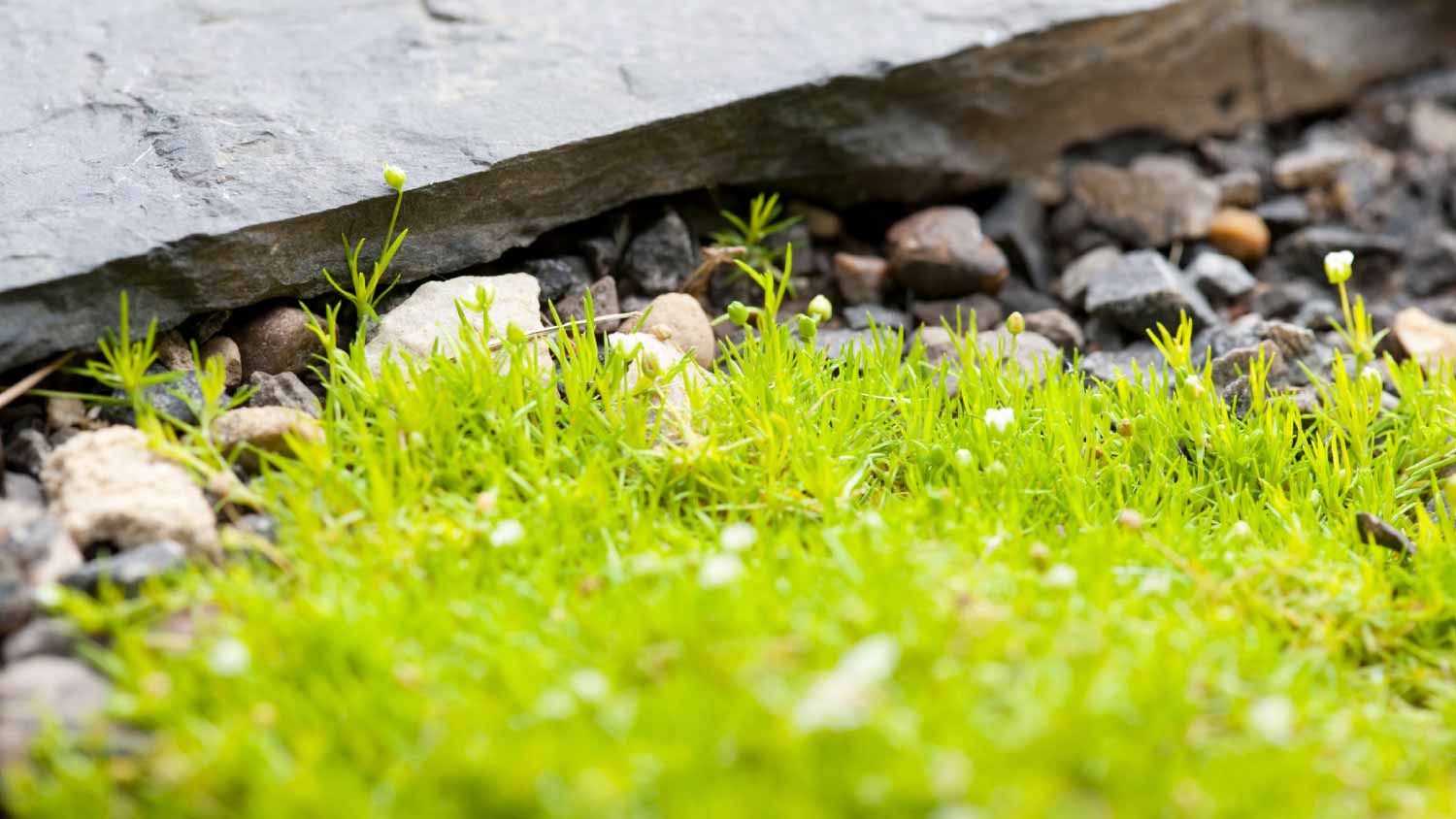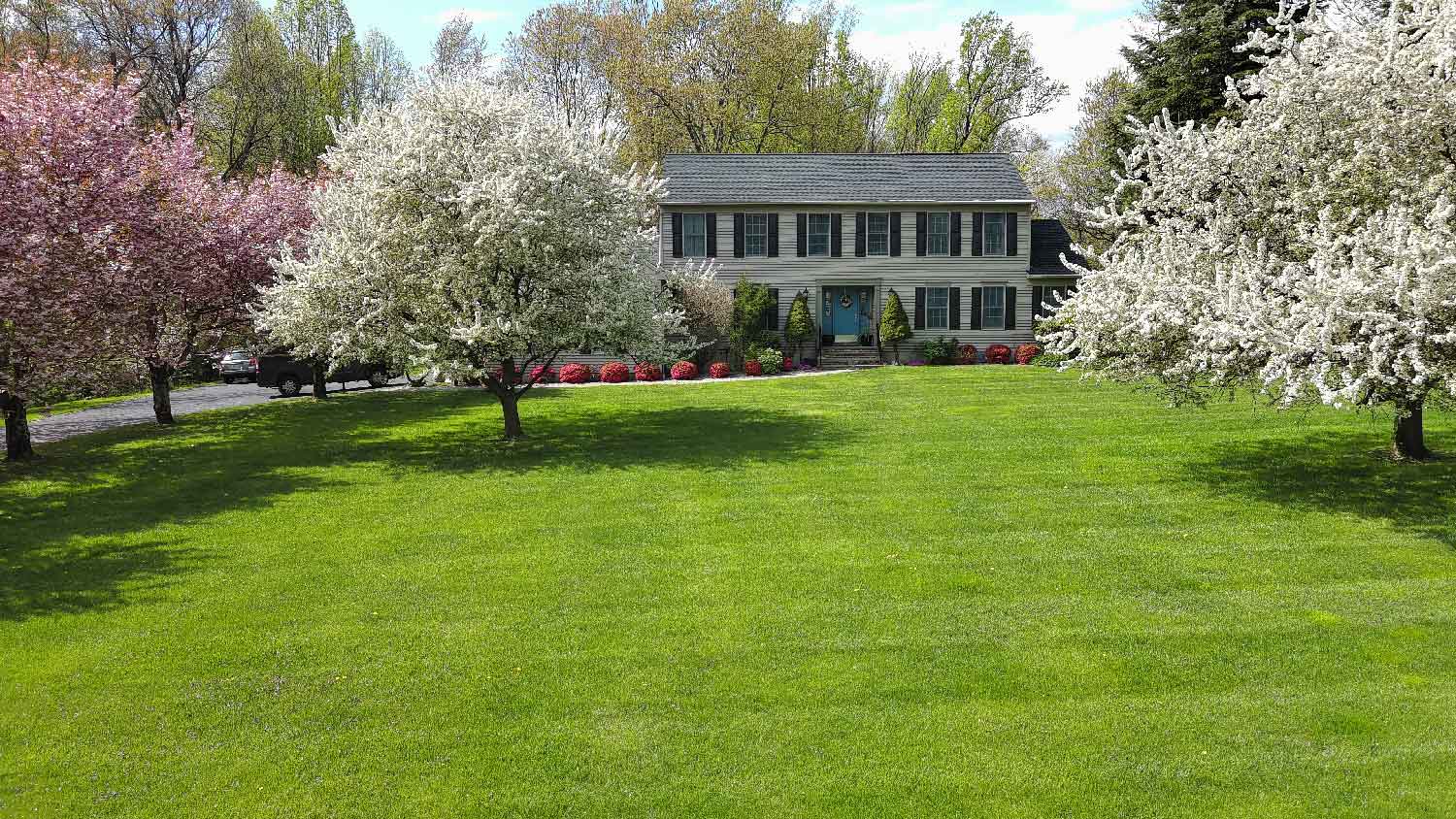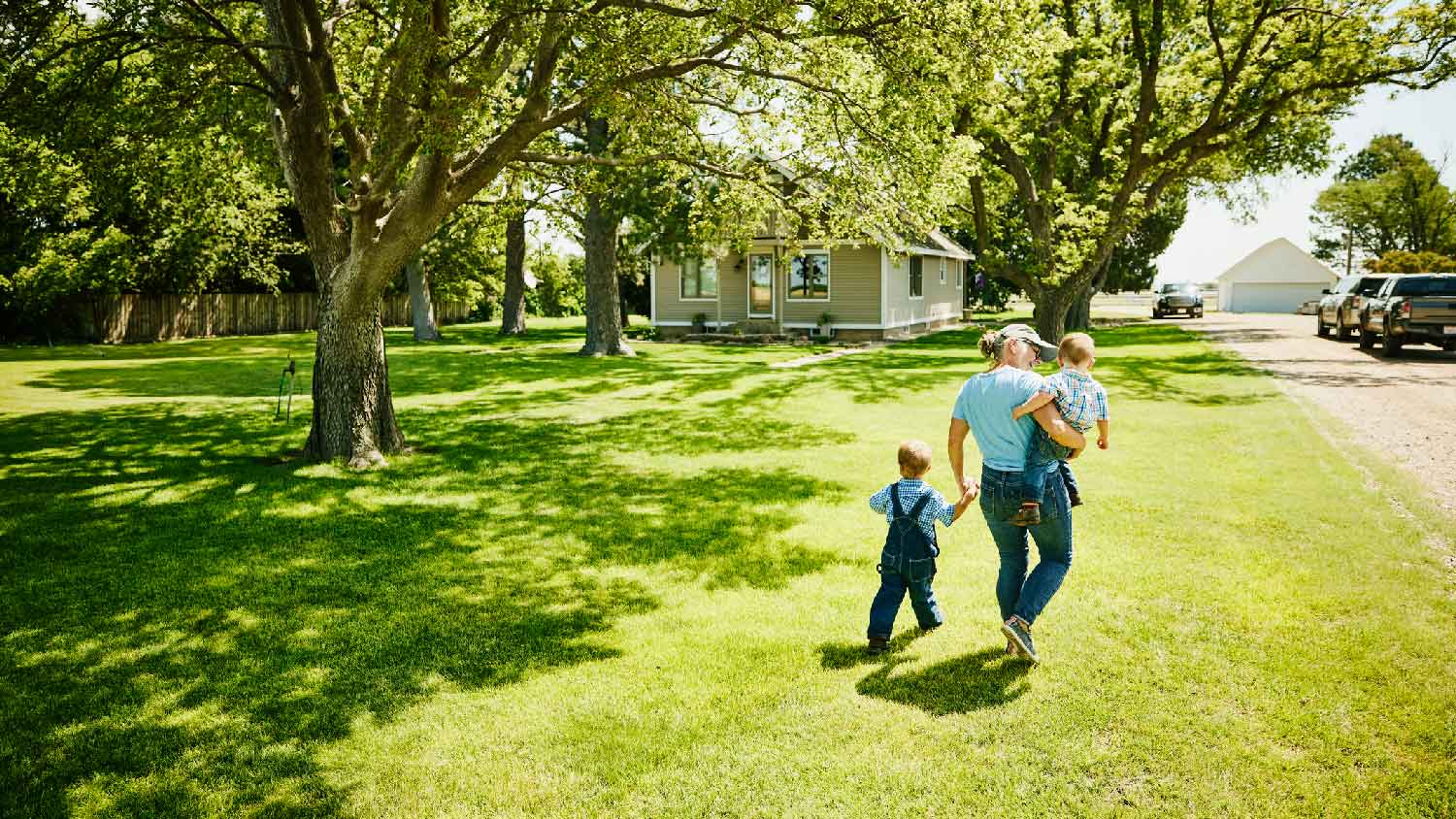How to Fix Patchy Grass: A Complete Guide
Make the grass greener on all sides of your yard by fixing patchy grass


Our lawns help us make a stellar first impression, whether through enhanced curb appeal or inviting guests to a backyard soiree. But swarths of dull, drab yellow and brown grass can have the opposite impact. Luckily, learning how to fix patchy grass allows you to get back to an emerald green lawn.
Why Do I Have Patchy Grass in My Yard?
Even an otherwise dense, healthy lawn can have a few uneven yellow or brown patches. Sometimes, it’s as simple as a lack of sunlight. One of the most important aspects of fixing patchy grass is understanding the root cause. There are several possible reasons why there’s patchy grass in your yard. Here are five of the most common culprits:
Increased Foot Traffic
Unfortunately, there are consequences to kids playing in the yard or setting up a swing set. The parts of your lawn that experience heavy foot traffic are more prone to thinning. Over time, soil compacts, which collapses the tiny air pockets that help your lawn grow. Also, water tends to pool on top of crushed, compact dirt instead of draining properly.
Insects
Lawn-eating insects are big fans of your grass. In addition to gnawing on your lawn, insects can bring disease. Typically, two types of insects plague a lawn: those that feed on the surface and those that prefer the roots. The most common lawn-loving bugs are: chinch bugs, sod webworms, cutworms, armyworms, white grubs, and billbugs.
Dog Urine
Dogs may be man’s best friend, but they can be a lush lawn’s greatest enemy. When a dog urinates on your lawn, the water evaporates, leaving behind a high concentration of nitrogen. This chemical element is surprisingly good for a dark green lawn. But, if left untreated with fertilizer, you’ll get a brown center with green edges, where the nitrogen is less concentrated.
Drought or Underwatering
A lack of water can cause parts of your lawn to go dormant, meaning active growth stops. Grass will become less rigid without a proper amount of water, which causes it to lay flat—especially when stepped on. When there’s a lack of water, the roots and crowns may still be alive, but the affected areas will look brown and dead.
Overwatering
Water can prove to be too much of a good thing for some lawns. Getting too much water can drown parts of your lawn. Overwatering can happen as a result of waiting for too long, but it can also occur if parts of your lawn have irrigation issues. To avoid overwatering, stick to a lawn-watering schedule.
How Much Does It Cost to Fix Patchy Grass?
To resolve the issue of patchy grass, you can reseed the area or lay sod. The cost of each method depends on the size of the patches in your yard, and the seed or sod type. On average, the cost to reseed a lawn ranges from $0.10 to $0.20 per square foot. If you’re looking for a more immediate lawn rejuvenation, the cost to lay sod costs between $0.35 and $0.85 per square foot for the material and $1 to $2 per square foot for installation costs, if you hire a professional.
How to Prep for Fixing Patchy Grass
Before you get started, find out what’s causing patchy grass. Pinpointing the underlying cause can help ensure that whatever method you choose will be effective for the long term. There are two main ways to fix patchy grass: patch with sod or reseed the area.
Patching with sod or reseeding the area are relatively quick and inexpensive strategies. However, patching bare areas with sod will have a more immediate impact, as it can take up to six months for the reseeding method to produce healthy grass.
Patching With Sod
No matter where you live, you have more leeway—most of your region’s growing season—when fixing patchy grass with sod. Keep in mind that it can take up to six weeks for sod to take root. Consider your sod-patching schedule carefully if you live in an area prone to an early hard frost.
Reseeding the Patch Climate can play an integral part in fixing patchy grass with seed. For areas with warmer winters, late spring and early summer is one of the best times to reseed. In areas with colder winters, late summer and early fall are ideal.
How to Fix Bare Patches of Grass With Sod
Replacing bare spots with fresh grass sod is a good option if you need an immediate fix for patchy grass. Usually, the new patches of sod will blend into the existing lawn within two to three weeks.
Cut Out the Old Grass
Dig out the brown, faded grass from the roots with a shovel or sharp spade. Cut about 2 inches beyond the patch and several inches deep into the green grass. Dig deep enough so that, when placed, the sod patch will be level with the rest of your lawn.
Compost, Level the Area
Loosen the soil in the area once the patch is out. Depending on the soil’s texture, you may need a shovel, cultivator, or garden rake. Loose soil will help the sod patch anchor into the ground. If needed, add organic matter to the area to level out the area, so the sod will be level with the rest of the yard.
Prepare and Place the Sod Patch
Lay a patch of sod over the area. Cut a patch of sod to fill the area using a garden knife or shovel. Ensure the patch tightly fits into the space without overlapping or stretching the sod. Firmly press the sod into the soil. Try walking on the area repeatedly to make sure the patch is in place.
Water the Sod Patch
Water the patch as soon as the sod is in place. Over the next few days, water the area two to three times a day. The goal is for the sod to bond to the ground, so it will actively grow. The sod should appear effortlessly intermingled with the lawn after two weeks. It can take up to six weeks for the sod path to be fully rooted.
How to Fix Patchy Grass With Seed

This is a quick, inexpensive way to patch bare spots, but it can take up to six months for the patch to fully blend with the rest of the lawn. Also, keep in mind that this patch will not be mowable for several weeks.
Remove Debris, Break Up the Soil
Use a garden rake to remove any dead grass or leaves. Use this time to inspect the area for insect damage. If the patch of lawn easily lifts, you might have grub damage that needs to be addressed before you move forward with the project. Use the rake or a garden cultivator to break up the soil.
Spread the Seeds Across the Soil
Mix several inches of compost or topsoil into the existing soil. Even out the surface before sprinkling grass seeds across the area. Aim for an even sprinkle that efficiently covers the surface.
Lightly Rake the Area
Raking the area will ensure the seeds are evenly distributed throughout the soil. Covering some of the seeds with soil also helps keep them in place.
Water the Soil
Keep the newly planted seeds moist throughout the day by lightly watering the area. Keep this routine for about 10 days, or until the seeds germinate and start to sprout. If you live in a hot climate, cover the patch with burlap or a thin layer of wheat straw. These methods will hold the seeds in place, while protecting the area from drying out.
How to Prevent Patchy Grass
As you work toward maintaining an abundant lawn, the best way to prevent unsightly patches of brown and yellow grass is to remember what causes it. You can prevent patchy grass by following a few simple steps:
Apply organic fertilizer twice a year to improve the soil texture.
Stick to a regular watering schedule without overwatering your lawn.
Properly mowing your lawn increases curb appeal, while improving your lawn’s overall health and strength.
Keep people and pets off your grass to keep it healthy and lush.
Use natural and homemade insecticides to keep the bugs at bay without inviting harmful chemicals into your space.
DIY vs. Hire a Pro
Taking the DIY route to fixing patchy grass is cost effective, but prepare to invest time and sweat equity. The overall cost for reseeding or laying sod in sections of your yard depends on the size of the area and type of seeds or sod. Planting the grass seed yourself can cost up to $0.20 per square foot, while you may spend up to $0.85 per square foot for sod.
If you’re short on time, hiring a professional might be the better option. A sod installation company can help you make informed decisions about the sod type and what will work best for your soil type and climate. A professional lawn seeding company in your area will understand what type of seed is best for your yard and how much is needed to achieve a lavish lawn.
Frequently Asked Questions
Whether or not grass will fill in bare spots itself depends on the type of grass you have. For example, grass with rhizomes (e.g., Bermuda grass) and stolons (e.g., Saint Augustine grass) will naturally fill in bald spots as it spreads laterally. However, clump-forming grasses will not spread.
If you throw grass seed on bare spots, some may sprout on the soil’s surface. However, the germination rate will diminish over time because the grass will not be rooted correctly. You may not get desired results if you toss grass seed on bare spots without proper lawn maintenance and cultivation.





- How to Lay Sod: A Step-by-Step Guide for a Beautiful, Lush Lawn
- Sod vs. Seed: What’s the Difference?
- What Is Sod? Everything You Need to Know
- Can You Lay Sod Over Existing Grass? What to Know Before You Start
- The Best Time to Lay Sod: A Complete Guide
- How Long to Water New Sod With Sprinkler Systems: Your Guide to a Healthy New Lawn
- How to Remove Grass: 5 Methods to Try
- When To Mow New Sod: What You Need to Know
- 12 Tips for Taking Care of Your Backyard, From Pruning to Weed Prevention
- How Much Does a Pallet of Sod Cover?










